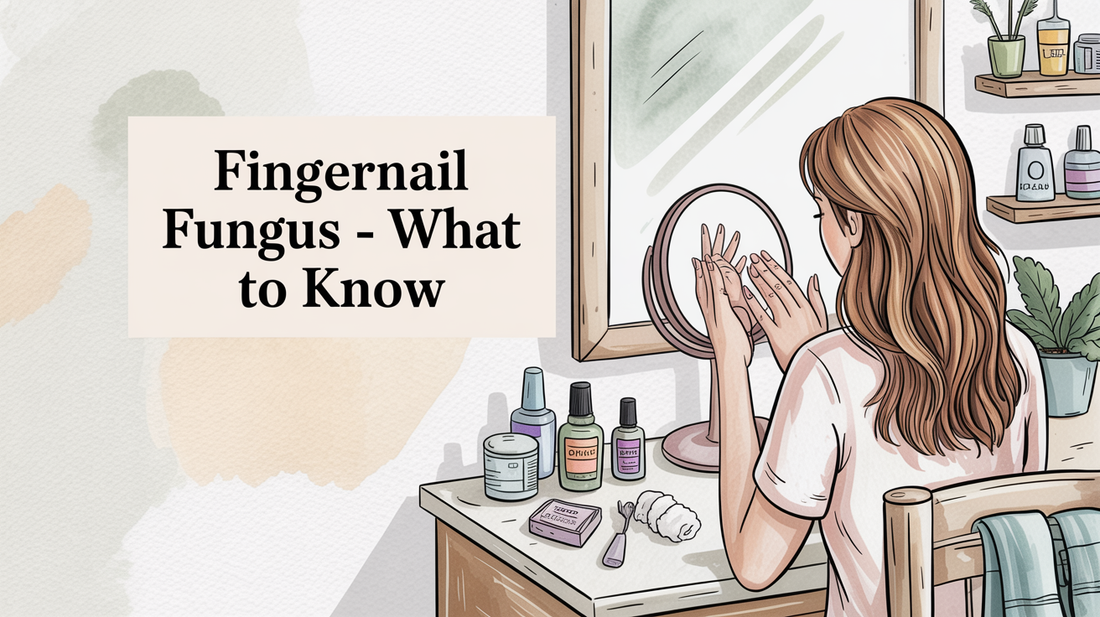Fingernail Fungus - What to Know
fingernail fungus, nail infection, nail discoloration — Fingernail fungus can lead to various concerns, including nail discoloration and infections. This post is structured into three sections to help you understand the appearance, causes, and potential treatments for fingernail fungus, enabling you to take proactive steps for your foot health.
What fingernail fungus looks like 🧭
Fingernail fungus can manifest in several distinctive ways, impacting the nail's appearance over time. The signs may include changes in color, texture, and shape, which can be helpful for identification.
Common visual characteristics include yellowing or browning that often starts at the tips or edges of the nails. In addition, you may notice thickening of the nail, making it harder to trim, and a brittle texture that may lead to breakage.
- Yellow or brown discoloration, usually starting at the nail's edges.
- Thickened nail plate that can be tough to cut.
- Brittle, crumbly texture prone to breaking.
- White or yellow streaks through the nail.
- Separation from the nail bed, forming a gap underneath.
Try It Tonight: Calm, Fresh Feet ✨
- Wash feet with warm water and mild cleanser; dry thoroughly between toes.
- Apply a small amount of Kissable Feet where needed; massage until absorbed.
- Let skin breathe; consider breathable socks if desired. Always patch-test first if you’re new to this foot cream.
Causes and risk factors ✨
Fingernail fungus can be caused by various microorganisms that thrive in warm, moist environments. Recognizing these causes and risk factors is crucial for prevention and early intervention.
Common culprits include dermatophytes, yeasts such as Candida, and non-dermatophyte molds. Environments like public pools or gyms can increase exposure risk, and even minor nail injuries can provide entry points for these fungi.
- Microorganisms like dermatophytes are the leading causes.
- Warm, humid settings, such as gyms or communal showers, heighten risk.
- Minor injuries to the nails create opportunities for fungal entry.
- Individuals with compromised immune systems or diabetes may be more susceptible.
- Older adults may experience slower nail growth, increasing vulnerability.
Why We Recommend a Gentle Helper 🌿
Kissable Feet is designed for quick absorption and offers a soothing experience without any stinging. The combination of tea tree, coconut, and calendula helps keep your feet comfortable while integrating smoothly into your nightly routine.
- Fast-absorbing and non-greasy for easy application.
- Gentle enough for sensitive, tired feet.
- Light, pleasant scent ideal for bedtime.
Best treatment approaches 🔍
Addressing fingernail fungus often requires a multifaceted approach, as treatment can be lengthy due to the slow growth of nails. Understanding various treatment methods can empower you to make informed decisions.
Options range from topical antifungal medications to more advanced therapies. While topical treatments may suffice for mild cases, oral medications or newer therapies may be necessary for more severe infections.
- Topical antifungal treatments can be effective for mild infections.
- Oral medications are typically used for moderate to severe cases, taken over several weeks.
- Newer options like laser therapy show promise in treatment efficacy.
- In severe instances, nail debridement or surgical removal may be required.
- Combination therapies often yield the best results.

